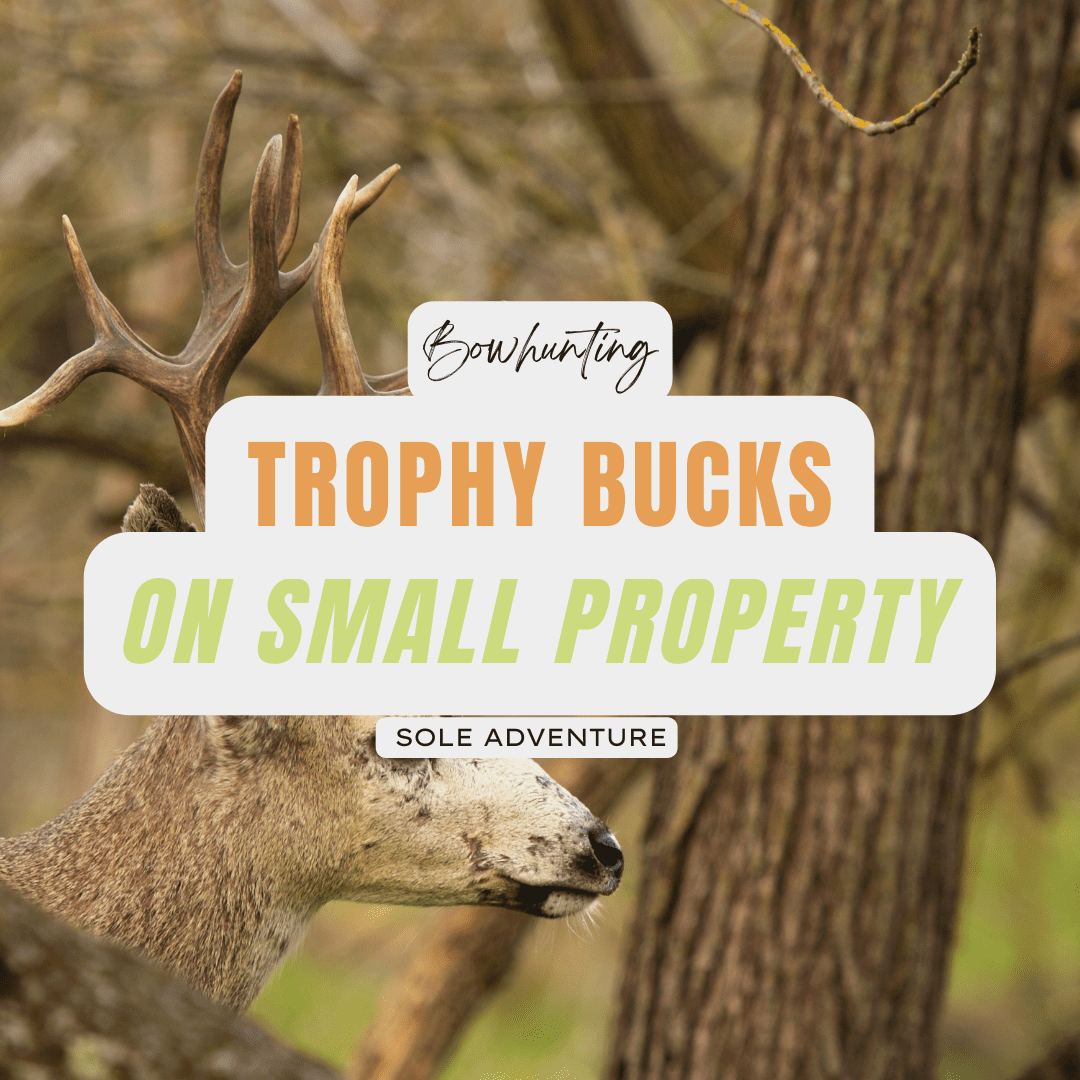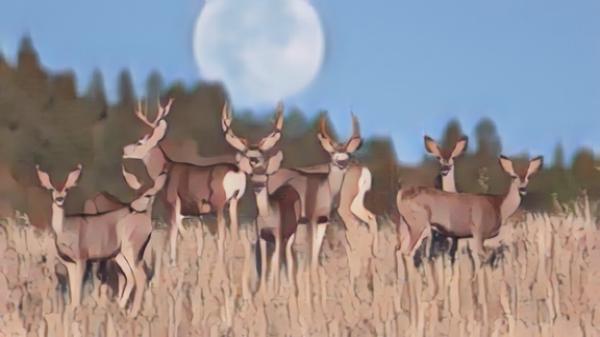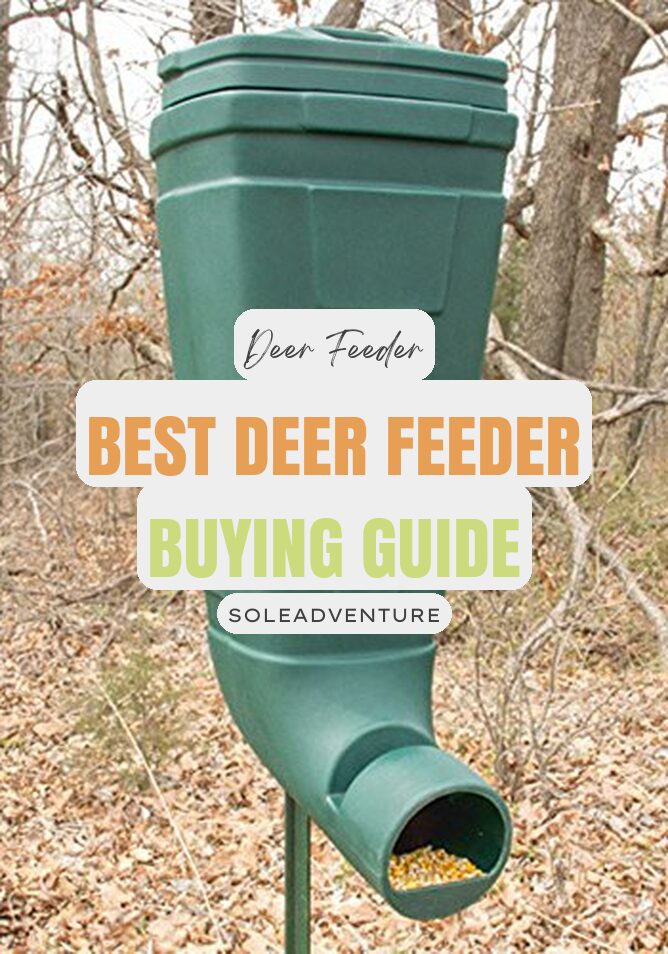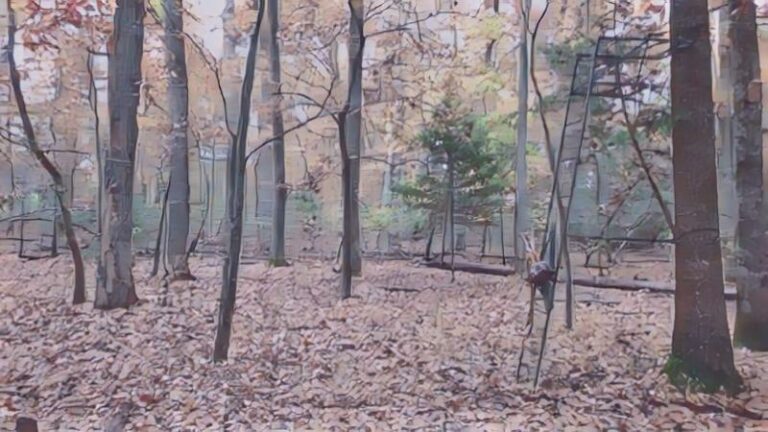If you have a small property and want to attract and hold trophy bucks, then this article is for you! You can create a buck paradise on a small property that will make you the envy of your hunting buddies. We will discuss what defines a small property, the deer necessities, food, water, cover, doe management, and other strategies to make your property more attractive to deer. We will also cover choosing trees and planting native grasses, as well as analyze your property and those around you. With these tips, you will be able to turn your small property into a dream spot for trophy bucks.
Contents
Understanding the Definition of a Small Property
When hunting on a small piece of land, it can be challenging to optimize the deer population and produce true trophies. But you can certainly increase your chances of attracting the majority of deer in your area by giving them the resources they need to live and flourish. Having a property that is only 10-100 acres may feel limited but compared to the total amount of area a deer will traverse in its lifetime, such a piece can count for plenty. The home range for most white-tails is one square mile, or 640 acres, so if you're able to offer something other nearby areas and hunters don’t then deer just may choose to take up residence on your smaller parcel. Of course, this doesn't mean you'll successfully control all aspects within that area but with proper management practices, your odds are highly improved.
Attracting & Holding More Deer on Your Property
Having your property be successful in holding mature deer may be a difficult task for some, especially those with smaller parcels of land. Although the entire whitetail population of the area may visit each acreage, it is still essential to make your block more enticing and secure than the other properties. Conversation with neighbors is important as they could have an impact on the buck maturity due to their own hunting practices.
It’s imperative to provide enough resources which can last through the whole year. As well as making sure your land has sufficient food sources, you'll need to ensure that your environment is safe enough for typical buck behavior; seclusion or thick cover to defend against predators will offer young white-tails a chance to mature. Consequently, investing time in both creating and protecting deer-safe habits on your property should lead to plenty of visiting populations.
The Deer Necessities – The Simple Deer Necessities
Enhancing Whitetail Food Sources
Enhancing the food available for whitetail deer on your property can be a multi-layered process. A great way to start is to explore setting up a food plot. Food plots provide an easy way to ensure deer have access to reliable nutrition year round, no matter what time of year it may be. For more limited spaces, planting micro-food plots can serve as an ideal option as well. Additionally, taking steps such as cutting back surrounding trees around oak tree saplings can help strengthen crop production when it comes to acorns and other nuts, while tending shrubs and other berry producing plants with fertilizer may boost the number of berries they produce. Furthermore, offering mineral supplements is not only a surefire way to build antlers and boost milk product in expectant mothers but also serves as an attractant that draws deer in from surrounding areas. Ultimately with thoughtfully laid plans, anyone can make sure whitetail deer both near or far will have access to nutritious meals once they venture onto their land.
Adding Water to Your Property for Whitetail Deer
Whitetail deer need access to water just like any other mammal, and it can be provided with a little bit of effort. To ensure that the deer on your property are well-watered, consider digging a large hole and inserting a 55 or 110-gallon metal tub. This provides a space where nature is able to fill up the tub and give the deer access to enough water. Additionally, place this watering hole between a food source and bedding area; deer are lazy creatures and will prefer staying in one area rather than moving around too much. The tub should then be checked every few months and cleared of debris such as leaves or sticks that get caught in it. By sinking the tub into the ground, your tub will blend in more easily with nature so that the deer don't feel unnatural when drinking from it.
Making Your Property a Safe Haven for Mature Bucks
Creating a safe haven for mature bucks requires more than just providing food and water. Safety is often the deciding factor of where an animal chooses to spend its time. To make your property more attractive and inviting to the elusive older bucks, you must take additional steps such as improving bedding areas and adding cover along trails. Hinge cutting can be implemented effectively by removing weaker trees to give stronger varieties, particularly oaks, ample room to grow their acorns. The presence of humans needs to be limited while hunting pressure has to be kept within reasonable boundaries with no more than one hunter per 20 acres suggested up to 50 acres if possible. Lastly, it is highly recommended that a section of the property be restricted from all forms of human activity in order to provide deer a secure retreat when feeling threatened.
Balancing Doe and Buck Populations
In order to regulate the doe and buck population in an area, it is important for hunters to take part in deer management. If there are many more does than bucks, this usually means that fawns born from these does will be quickly moved out of the area as they mature. Additionally, a number of outside factors such as other hunters or nature can disrupt the sex ratio and throw it out of balance.
To offset this and achieve a successful population balance, taking a few does out during early season can be beneficial. By shooting 3-5 mature does, you are making food sources last longer for other wildlife inhabiting the area as well as providing essential nutrition to bucks. In terms of value, young does are more advantageous due to their ability to reproduce more offspring over the next few years while mature does may not provide as much or could possibly pass away naturally before then.
Going the Extra Miles for Whitetail Attraction
Attracting whitetail deer to your property takes more than just meeting their basic necessities. If you want to draw deer in from other areas, or build up a large population on your land, then you will need to put in the extra effort. Creating food plots and planting trees for cover and food will help attract them in, as well as implementing a dependable water source such as a pond or stream. Additionally using attractants such as mineral licks and deer urine alongside equipment like trail cameras and hunting stands can help monitor wildlife activity and ensure success while pursuing game. All of which can be quite time consuming, however if executed correctly can give your property the boost it needs to host huge populations of whitetail deer.
Choosing Trees
The Benefits of Planting an Oak Tree
If you want to provide more natural food sources for whitetail deer in the area, consider cutting down some of the less desirable trees that grow on your property. This will allow more sunlight and nutrients to reach younger oak trees, thus helping them produce acorns that deer love to eat. Furthermore, creating bedding areas is a great way to keep them safe and protect them from predators. You can do this by hinge cutting some of the unwanted trees to give them more coverage. Additionally, clear cutting a few trees elsewhere may open up brushy areas with plenty of edible vegetation for whitetail. All in all, taking steps like these are an effective means of providing food sources for whitetail and encouraging their growth in the area.
Pine Trees: A Necessary Refuge for Whitetails
When it comes to creating a refuge for whitetail deer during winter months, pine trees can be a great asset. Their needles can provide much needed warmth, even in the coldest of climates. The presence of just a few pine trees on your property can be an appealing bedding area for these animals as well. Furthermore, if you take the extra step and hinge cut these trees, they will provide the perfect disguise from predators and other potential threats. Therefore, adding some pine trees to your property could prove to be a great decision that is sure to attract deer at all times of the year, particularly when temperatures drop.
Plant Fruit & Berry Bushes for Deer
If outdoor space allows, plant fruit trees and berry bushes as a great food source for deer. Planting these require some major commitment as trees may need cages to protect them from being eaten by the deer and weeds and fertilizer must be taken care of in order to encourage the trees to grow and bear fruit. Identify the type of fruits and berries best suited for the local environment, aiding young plants with proper care even if they exist naturally. It is an arduous task but one that will pay off due to its innumerable benefits.
Adding Native Grasses to Increase Whitetail Cover
Supplementing open grassfields with tall native grasses can be an attractive survival advantage for whitetail deer. Areas where these plants are present will create thicker cover, consequently helping mature bucks feel more secure in their bedding spots. Even if the area is small, extra shelter from elevated native grasses gives deer a place of refuge over other properties without it.
Assess Your Property and Those Nearby
When it comes to detailing the best ways to attract and keep deer on your property, there is no one-size-fits-all approach. Each parcel of land is unique, ranging in size and resources not just within a single area, but even between properties that are close together. It's important to first analyze what type of parcel you're dealing with and assess both what it already has available to it and what is missing. Basics such as food plots and water sources will prove valuable regardless of size or resources, while larger properties may require more advanced techniques like tree culling or planting new trees for added cover and security--two key elements for drawing older bucks. Spending time studying your property is ultimately the single most important factor in designing the perfect approach to providing habitat for whitetail deer.







